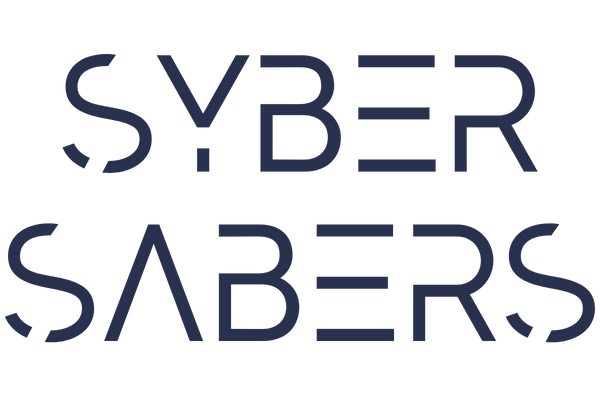How to change the settings of Proffieboard (Beta version)
Last updated: April 29, 2025 (ProffieOS 7.15)
Notes
Changing the settings of your Proffieboard requires a certain level of technical knowledge. You are free to customize it yourself, but please note that any troubles or malfunctions caused by changing the settings or other defects may be subject to a repair fee even if the product is within the warranty period.
Before making any changes to the settings, be sure to back up the files on the SD card.
Please note that as the computer, OS, version, and other requirements vary from customer to customer, we are unable to provide individual support regarding environment construction and configuration.
The contents of this page are for reference only, and any changes to the settings are at your own risk. We take no responsibility for any trouble or damage caused by changing the settings.
What you need to change the settings
Below is a list of what is needed to create a configuration change environment for Proffieboard V2.2 (V3.9).
- Lightsaber body or board : A Proffieboard v2.2 (V3.9) board or a custom lightsaber equipped with it is required.
- Computer : A computer with Windows 10 (or 11) installed. Macs are also supported, but these instructions are for Windows.
- Software : Arduino IDE (free download from the official Arduino website ). Zadig (free download from the official Zadig website ). The latest versions of both should suffice.
- USB Cable : A USB cable for connecting the Proffieboard to a PC (Proffieboard supports Micro USB).
- Internet connection : Required for downloading Arduino IDE and board definitions for Proffieboard, and for obtaining the latest version of ProffieOS.
- ProffieOS software : Firmware for the Proffieboard. The latest version of ProffieOS can be downloaded for free from ProffieOS (hubbe.net) . The latest version provided should be fine.
- Text editor (optional): Used to edit configuration files. We will use Sakura Editor (sakura-editor.github.io) here.
How to change the settings of Proffieboard
Step 1: Install Arduino IDE
-
Download Arduino IDE : Download Arduino IDE from the official Arduino website . The image shows IDE 2.2.1, but the latest version available at the time of purchase should be fine.

- Installation : Run the downloaded file and follow the instructions to install Arduino IDE.
Step 2: Install the board definition for Proffieboard
- Launch Arduino IDE : Open the installed Arduino IDE.
-
Setting additional Boards Manager URLs : Select "Preferences" from the "File" menu, and add the following URL to "Additional Boards Manager URLs".
https://profezzorn.github.io/arduino-proffieboard/package_proffieboard_index.json

- To start the Boards Manager : From the Tools menu, select Board → Boards Manager...
-
Search and install Proffieboard : Search for "Proffieboard" in the board manager and click the "Install" button for Proffieboard by Fredrik Hubinette. The image shows version 3.6, but the latest version at the time of download is fine.

Step 3: Installing the driver Pattern 1
- Download ProffieDFU: Get and install ProffieOS DFU . Direct link: proffie-dfu-setup
You can now skip the steps previously performed in Zadig (Step 3, Pattern 2).
If you are unable to perform DFU due to your device or environment, please perform pattern 2 in step 3.
Step 3: Install the driver (Pattern 2)
-
Download Zadig : Download Zadig from the official Zadig website .

- Run Zadig : Run the downloaded Zadig.
- Connecting the Proffieboard : Connect the Proffieboard to your PC with a USB cable.
-
Installing the driver : Select "Options" → "List All Devices" from the Zadig screen to display a list of connected devices. Select STM32 BOOTLOADER from the list, select "WinUSB", and click "Install Driver" or "Replace Driver".

Step 4: Edit the config file and write it to the board
Prepare the config file:
- Download and extract ProffieOS : Download ProffieOS (hubbe.net) and extract it to a location of your choice.
- Selecting a config file : Save the config file in the "config" folder in the ProffieOS folder.
- Edit the config file : Use a text editor to edit the config file. You can customize collision sensitivity, number of LEDs, fonts, LED lighting, and more.
Operation in Arduino IDE:
-
Open the ProffieOS sketch (.ino file) in the ProffieOS folder.

-
Specifying the config file in the sketch : The first few lines of the ProffieOS sketch specify the config file to use, for example:
#include "config/your_config_file.h", which is the path to the config file you edited in the Preparing the config file section. - Select the board and port : From the "Tools" menu of the Arduino IDE, select "Board" and then "Proffieboard V2"*, then select the port to which the Proffieboard is connected from "Tools" → "Port". If the board is not displayed, click "Get Board Information" from "Tools". *If the board installed in the saver is Proffieboard V3.9, select Proffieboard V3.
-
Uploading the sketch : Click the "Upload" button (red frame) in the upper left of the Arduino IDE to upload the settings to the Proffieboard. It will take about a minute to write.

Setting change Example 1: Changing blade LED parameters
Example) To change the number of blade LEDs:
Open the configuration file and change the red number in the BladeConfig blades[] section at the bottom.
This number represents the number of LEDs on the main blade. If you set it to 115 as in the image, all 115 LEDs in the blade will be lit up.
115 LEDs is equivalent to a 32 inch (approximately 80 cm) blade.

If you are using a 35-inch blade, set it to 132.

After rewriting the configuration file, save it overwrite and use Arduino to upload it to the target saver and the settings will be reflected.
Useful links
Proffieboard V2 (hubbe.net) Proffieboard V2.2
ProffieOS Documentation: Proffieboard Setup (hubbe.net) How to set up your Proffieboard
Proffie V2.2 Setup Tutorial Proffie V2.2 Setup Tutorial
